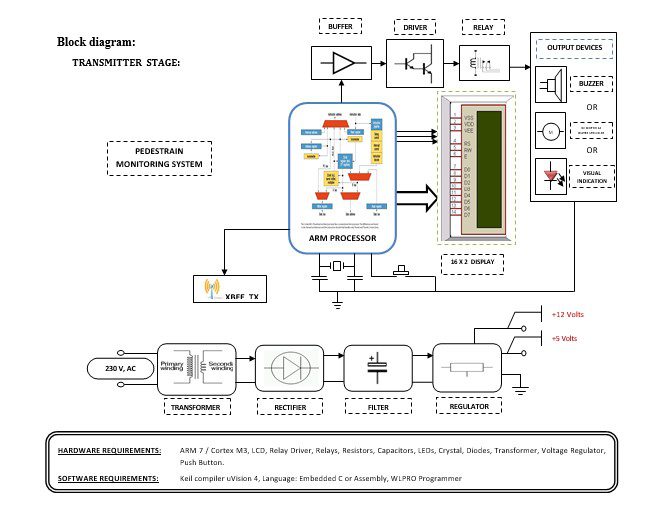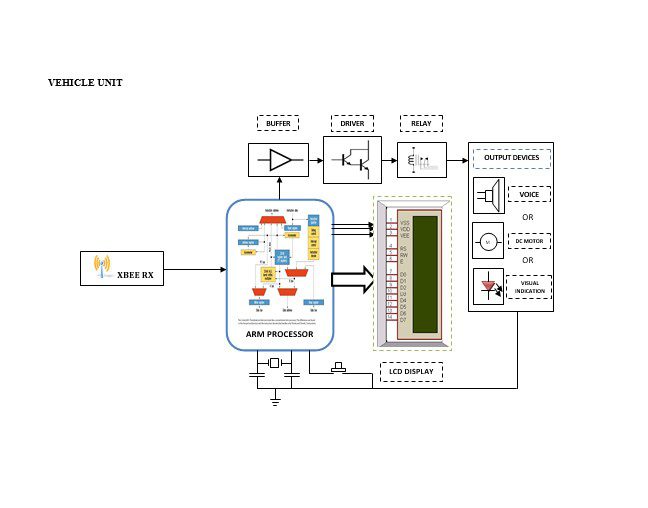Table of Contents
Introduction:


Vulnerable Road Users are defined as ”non-motorized road users, such as pedestrians and cyclists as well as motorcyclists and persons with disabilities or reduced mobility and orientation”. According to the statistics, more than 3000 people die daily due to dangerous driving, and half of them are vulnerable road users. The main reason for accidents is the inability of road users to detect and perceive oncoming dangers before a sufficient amount of time so that reactions for accident avoidance can be taken. Much attention has been put into detecting pedestrians and predicting the possibility of collisions using sensors and computer vision techniques. Such sensor-based approaches however do not perform well in poor visibility conditions e.g., at night time, in bad weather conditions, or the pedestrian is not close enough(e.g. within a few tens meters) or in non-line-of-sight (NLOS) position w.r.t the sensor. Therefore it is necessary to study and develop different technologies to fill the missing gap towards zero fatalities. One such technology is radio communications technology that has the potential to provide an extended ”view” to road users even in NLOS conditions.




Block diagram explanation :
Power supply unit:
This section needs two voltages viz., +12 V & +5 V, as working voltages. Hence specially designed power supply is constructed to get regulated power supplies.
Zigbee technology:
ZigBee is the name of a specification for a suite of high-level communication protocols using small, low-power digital radios based on the IEEE 802.15.4 standard for wireless personal area networks (WPANs).
- A very low-cost, low power consumption two-way, wireless communication standard for automation, toys & PC peripherals.
- Low power consumption: 6 months to 5 years battery life for most applications.
- Low cost: At least half the cost of Bluetooth solutions.
- The high density of nodes per network: 250 nodes per network, multiple co-located networks.Data rate requirements: Few bits to 250kbps sufficient.
ARM processor:
ARM is a computer processor-based RISC architecture. A RISC-based computer design approach means ARM processors require significantly fewer transistors than typical processors in average computers. This approach reduces costs, heat, and power use. The low power consumption of ARM processors has made them very popular:
The ARM architecture (32-bit) is the most widely used in mobile devices, and the most popular 32-bit one in embedded systems.
ARM processor features include:
- Load/store architecture.
- An orthogonal instruction set.
- Mostly single-cycle execution.
- A 16×32-bit register
- Enhanced power-saving design.
Buffers:
Buffers do not affect the logical state of a digital signal (i.e. a logic 1 input results in a logic 1 output whereas logic 0 input results in a logic 0 output). Buffers are normally used to provide extra current drive at the output but can also be used to regularize the logic present at an interface.
Drivers:
This section is used to drive the relay where the output is the complement of input which is applied to the drive but the current will be amplified.
Relays:
It is an electromagnetic device that is used to drive the load connected across the relay and the o/p of the relay can be connected to the controller or load for further processing.
Methodology:
The transmitter will have the pedestrian monitoring system, when it detects the moment then it gives the signal to the ARM, then the ARM will send the information to another receiving station through ZIGBEE which is in the vehicle. At the same time, ARM will generate the output that is fed to buffer IC 4050, buffer stores and given to the driver IC 2003 in driver current will amplify and voltage will invert with the help of the Darlington circuit of driver IC to drive the relay. Then the signal is given to the output load for indication purposes.
When ARM receives the data from the Zigbee, it will enable the alert through the Buzzer on the receiver side which is placed in the vehicle.
Advantages:
- This project we can operate Easily.
- Compare to other high-end techniques like image detection systems at the roadside.
- It is low cost.
- This project also helps to avoid accidents between vehicles, pedestrians.
Disadvantages:
One-time investment cost
Applications:
- Automatic vehicle braking by detecting Objects in front Vehicle.
- We can implement this project for Driver assistance.
- we developed an application with the functionalities of Xbee communications, risk calculation, and hazard alarming.




